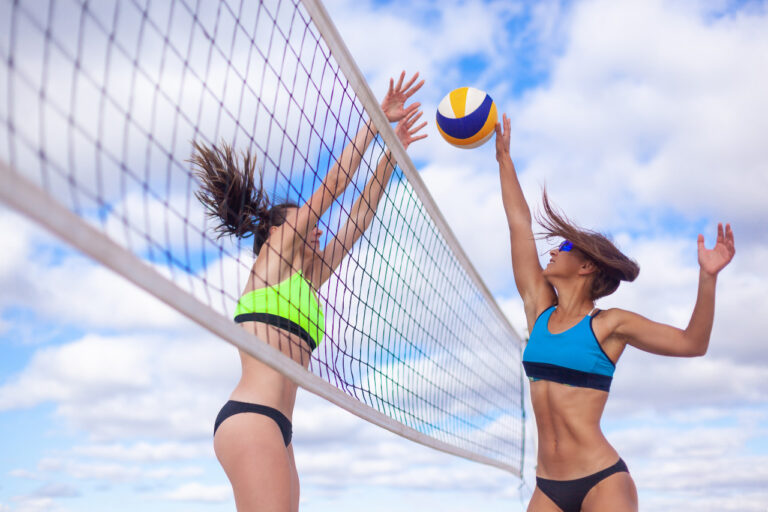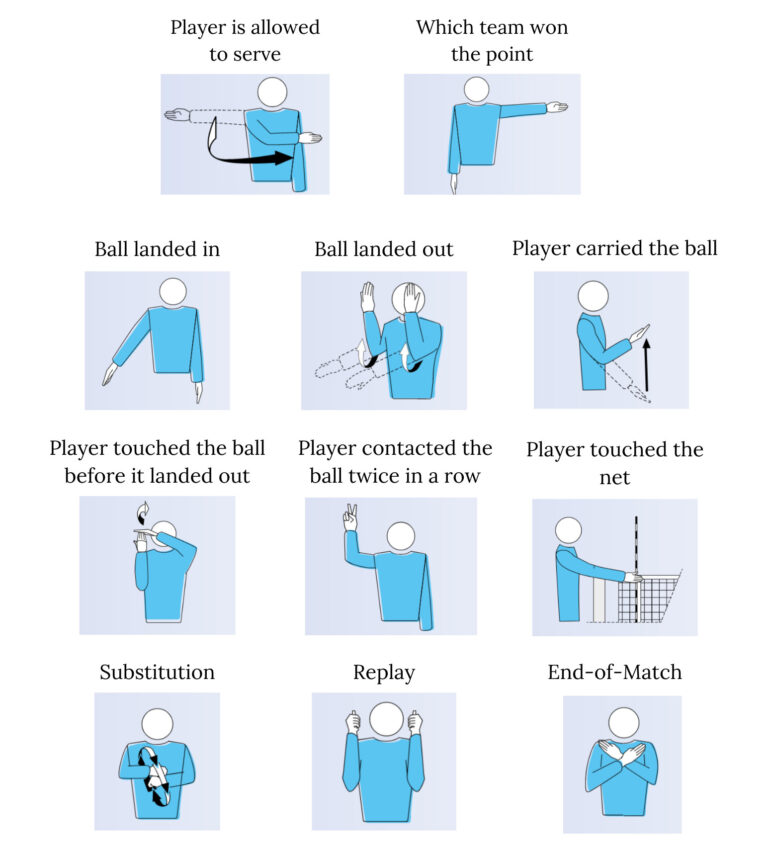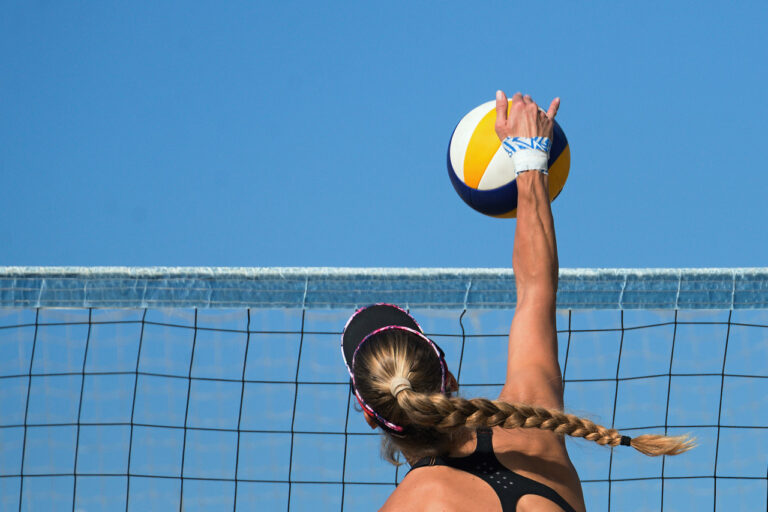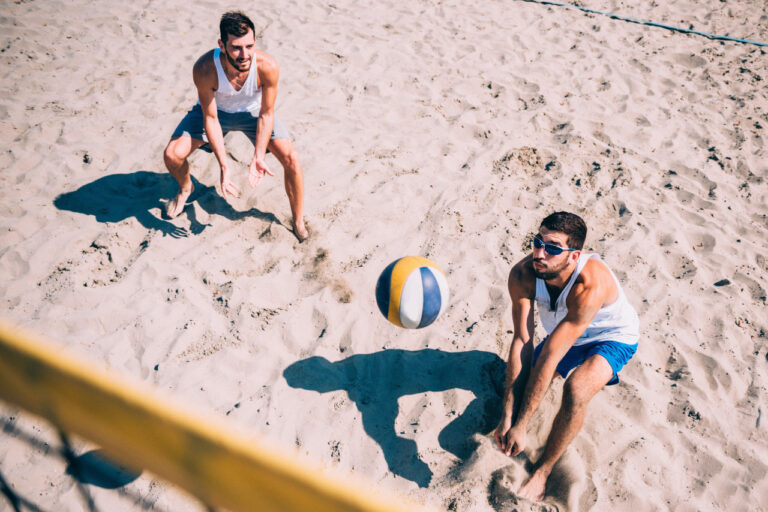Introduction to Beach Volleyball
BEACH VOLLEYBALL COURT

- Regulation beach volleyball court = 8 m (26′ ¼”) x 16 m (52′ ½”)
- Two teams of two players, separated by a net down the middle of a court
- No substitutions
- The side lines and back line are part of the court (the ball is “in” if it hits any part of a line)
Net Heights (same height as indoor)
- Men’s = 7′ 11⅝”
- Women’s = 7′ 4⅛”


RULES OF PLAY
RALLYING
- Each play/rally starts with a serve from behind a back line
- Each team has up to three touches to return the ball across the net
- The ball must cross the net between the two antennae
- If the ball hits any part of an antenna, it is “out”
- The play ends when the ball is grounded or when a player commits an error
SCORING
- Players score points by:
- grounding the ball inside the other team’s court
- causing the other team to be unable to return the ball, or
- forcing the other team to commit an error
- After each play, one team receives a point and is the serving team for the next rally (called Rally Scoring)
- Teams change sides of the court at every multiple of seven points in sets 1 & 2, and every five points in set 3
- Players score points by:
MATCHES
- Matches are best of 3 sets
- Sets 1 & 2 are played to 21 points
- Set 3 goes to 15 points
- Teams must win by 2 points
- Each team is allowed one 30-second timeout per set
- A “Technical Timeout” is automatically called when the sum of the two scores equals 21
- Matches are best of 3 sets
POSITIONS
Blocker
- Sole blocker at the net, giving signals to their partner about their blocking tactics
Defender
- Sole defender behind the blocker, responsible for covering the rest of the court
BEACH VS. INDOOR
First Contact
- A first contact ball cannot be taken with open hands (unless it is hard driven and downward)
Overhand Setting
- You cannot overhand set the ball over the net unless you are fully square to where you are setting
- Calls for carries are much more relaxed, and calls for doubles are much more strict
Tipping
- Open hand tips are not allowed (it is common to use two knuckles for tips instead)
Blocking
- The block counts as a “Team Contact” and is considered one of the three hits
- The blocker can contact the ball a second consecutive time after the block
Net
- A player cannot contacts any part of the net with any part of their body or uniform
- Players may go under the net as long as they do not interfere with play
REFEREE SIGNALS

COMMON ERRORS
Double Contact
- A player contacts the ball twice in a row
Lift/Carry
- A player has prolonged contact with the ball, lifting or carrying it in the air
Four Contacts
- A team contacts the ball four times
Foot Fault
- A player steps onto the court when they contact the ball to serve
Net Violation
- A player contacts any part of the net with any part of their body or uniform


TERMINOLOGY
Ace
- A serve that results directly in a point, either when the ball hits the floor on the receiving team’s side of the court untouched, or when it is touched but unable to be kept in play by the receiving team
Kill
- A successful hit that results in an immediate point, either by grounding the ball or causing the other team to make an error
Cut Shot
- A slower attack shot at a sharp angle that lands close to the net
Tool
- When an attacker purposefully hits the ball off the block
Dig
- Passing an attacked volleyball (hit or tip)
Float Serve
- A serve with no spin on the ball, causing it to move erratically (like a knuckleball)
Side Out
- When the serving team loses the point, causing the other team to rotate clockwise and serve to start the next point
In-System
- The first contact is controlled and close to the net
Out-of-System
- The first contact is off the net, making the angles difficult to attack the third ball
Free Ball
- A team sends over the ball with a forearm pass, usually not aggressively
Down Ball
- A team sends the ball over with a swing but the player staying on the ground
Joust
- When two players contact the ball above the height of the net at the same time
MISCELLANEOUS
- It is legal to contact the ball with any part of your body
- It is illegal to block or attack a serve in front of the 10′ line
- Server must make contact with the ball within 5 seconds of the referee’s whistle to serve
- Only one injury timeout per player per match is allowed
